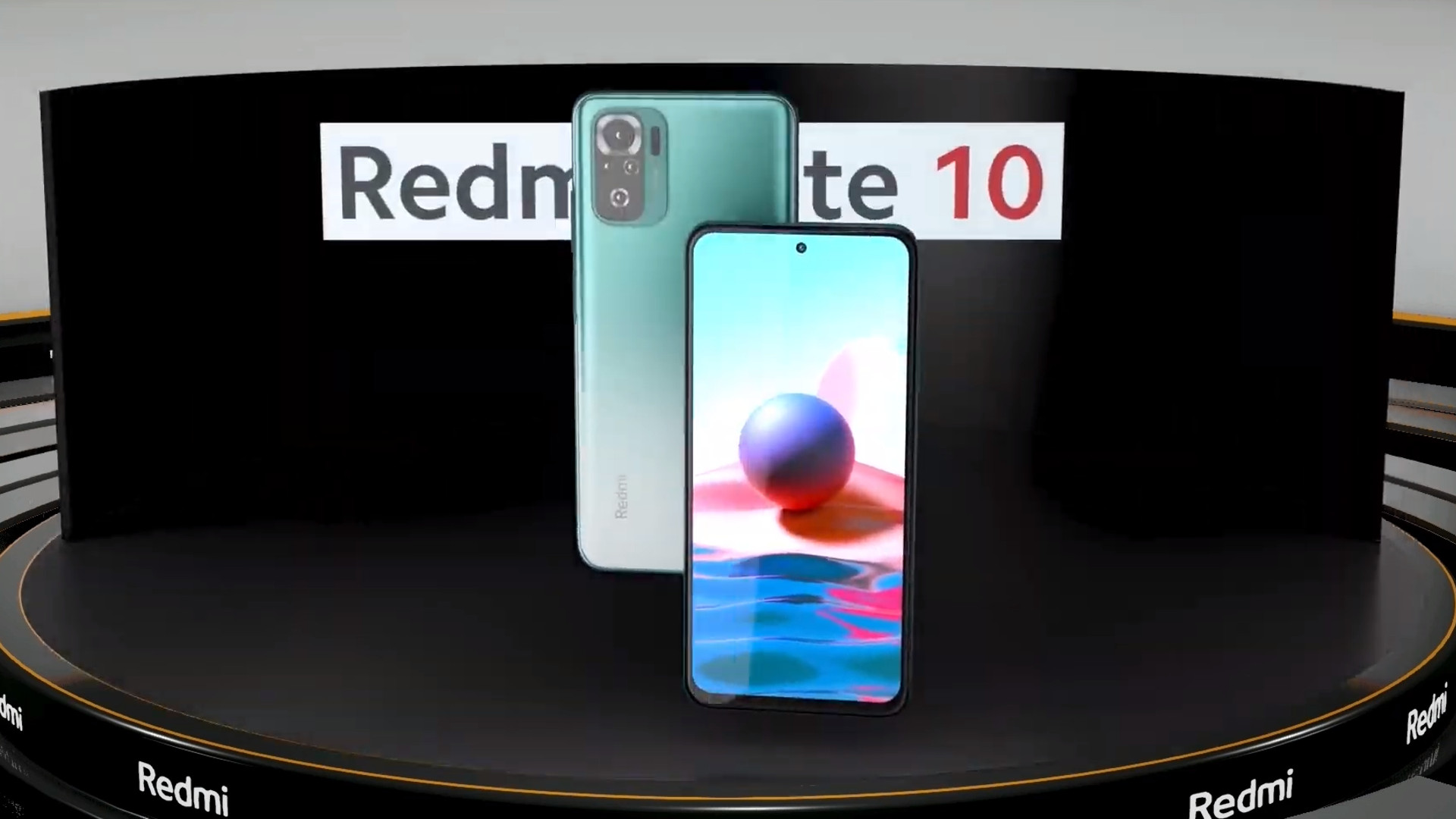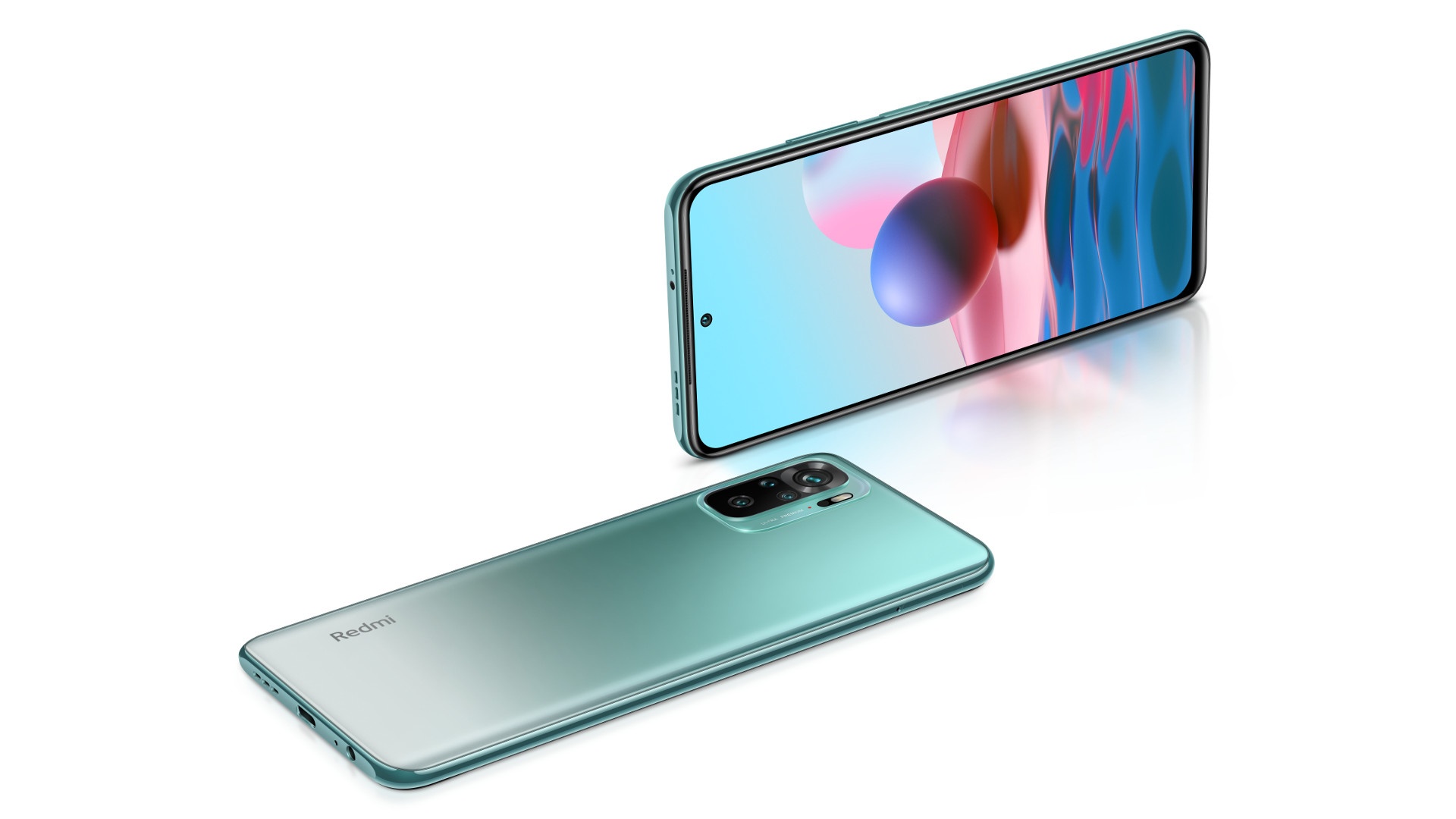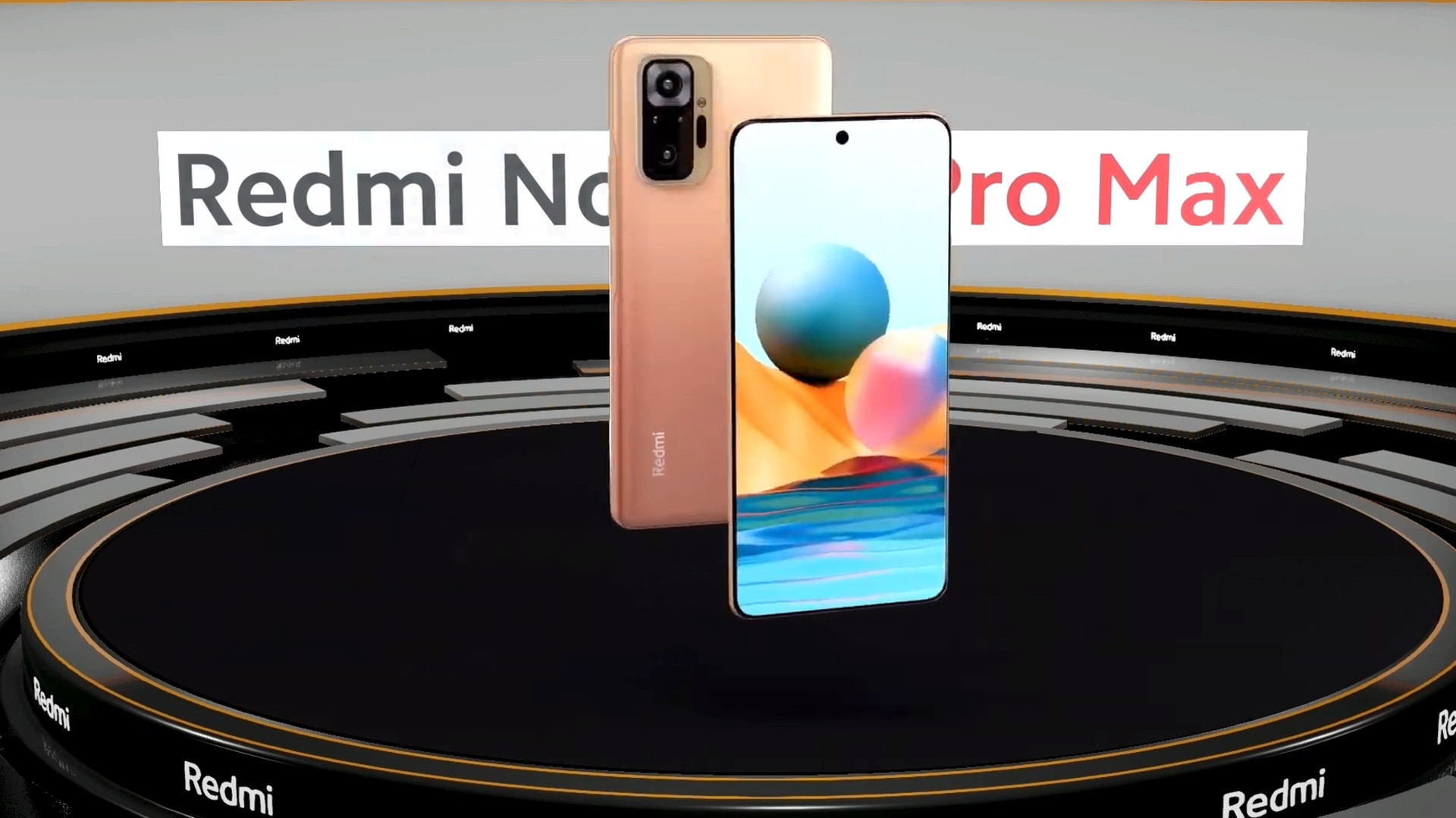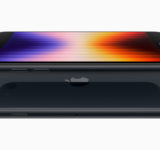The new Redmi Note 10 lineup comprising Redmi Note 10, Redmi Note 10 Pro, and Redmi Note 10 Pro Max have released in India.
Ranging from INR 13,999 to INR 21,999, all of these smartphones share a common battery size with a 33W fast charger right inside the box, OLED display, 3.5mm audio jack, dual stereo speakers, IP53 certification, IR blaster, and side-mounted fingerprint sensor. And what are the differences, let’s find out in a detailed overview below.
Redmi Note 10
The Redmi Note 10 comes with a 6.43-inch Super AMOLED display with 2400 x 1080 pixels resolution and a 20:9 aspect ratio that translates to around 409ppi pixel density. The display is touted to emit 450 nits and 1100 nits peak brightness whilst protected underneath a Corning Gorilla Glass 3 layer.
Running on MIUI 12 on top of Android 11 OS, the device is powered by a Qualcomm SDM678 Snapdragon 678 chipset based on 11nm fabrication coupled with 4GB or 6GB of RAM and 64GB or 128GB of UFS 2.2 storage expandable via dedicated microSDXC slot. The Adreno 612 GPU takes care of the graphics.
As for the optics, we are looking at a quad-camera setup at the back including an f/1.8 48MP Sony IMX582 main, an f/2.2 8MP ultrawide, an f/2.4 2MP macro, and an f/2.4 2MP depth sensor while a single f/2.5 13MP wide sensor at the front. The rear camera is complemented with an LED flash, HDR, and panorama support and can record 4K videos at 30fps, 1080p videos at 30fps, 60fps, and 120fps, and 720p videos at 960fps. Although the selfie shooter also supports HDR and panorama, the video recording capability is capped at 1080p at 30fps.
For connectivity, Note 10 gets Wi-Fi, Bluetooth, GPS, infrared port, and USB Type-C 2.0. Similarly, sensors include a side-mounted fingerprint scanner, accelerometer, gyro, proximity, and compass.
The device carries a 5,000mAh cell with 33W fast charging to keep its lights on. It’s advertised to go from 0 to 67% in 30 minutes and 0 to 100% in 74 minutes.
Available in Onyx Gray, Pebble White, and Lake Green colors, the Redmi Note 10 will retail at a price of INR 13,999 — around NPR 19,999 in Nepal for 4GB/64GB — and INR 13,999 (~NPR 22,999) for 6GB/128GB memory configurations. The sales will kick off as of March 16 via mi.com and Amazon India.
There’s a Pro variant as well
Coming to the Pro variant, this one gets a 120Hz 6.67-inch Super AMOLED display with a similar resolution and aspect ratio but a different pixel density and brightness number to 395ppi and 450nits and 1200 nits peak brightness. The Redmi Note 10 Pro even gets a Corning Gorilla Glass 5 protection.
Running on a similar MIUI 12 skin on top of Android 11, the device is powered by an 8nm process-based Qualcomm SM7150 Snapdragon 732G processor paired with 6GB or 8GB of RAM and 64GB or 128GB of UFS 2.2 storage expandable via dedicated microSDXC slot.
At the back lies a quad-camera setup comprising an f/1.9 Samsung GW3 main sensor, an f/2.2 8MP ultrawide sensor, an f/2.4 5MP macro sensor, and an f/2.4 2MP depth sensor whilst the front sees a single f/2.5 16MP shooter with panorama for selfies. The video recording capability of both the rear and front cameras is identical to what we have seen in the regular model.
Connectivity options include Wi-Fi, Bluetooth, GPS, infrared port, USB Type-C 2.0, and a 3.5mm port.
This comes with a slightly larger 5,020mAh battery with the same 33W fast charge support that is said to charge from 0 to 57% in 30 minutes and 0 to 100% in 74 minutes as advertised.
Available in Vintage Bronze, Glacial Blue, and Dark Night colors, the Redmi Note 10 Pro will go for sale at a price of INR 15,999 — around NPR 25,999 in Nepal for 6GB/64GB, INR 16,999 (~NPR 27,500) for 6GB/128GB, and INR 18,999 (~NPR 30,999) for 8GB/128GB memory config, scheduled for March 17 on mi.com and Amazon India as well.
What about the Pro Max version?
The eldest in the new Redmi Note 10 lineup, the Redmi Note 10 Pro Max shares an identical display and memory configuration as well as the operating system and chipset to Pro model.
It has a Samsung-made 108MP ISOCELL HM2 main sensor at the back alongside an f/2.2 8MP ultrawide sensor, an f/2.4 5MP tele-macro sensor with 2x zoom, and an f/2.4 2MP depth sensor while the selfie shooter and video recording capability of both the rear and front camera remain the same again.
The Redmi Note 10 Pro Max brings no difference in connectivity, sensors, and battery size to the Pro variant, yet charges from 0 to 60% in 30 minutes and 0 to 100% in 75 minutes as advertised.
Available in Dark Night, Glacial Blue, and Vintage Bronze colors, the Redmi Note 10 Pro Max is all set to go for a starting price of INR 18,999 (~NPR 30,999) for 6GB/64GB, INR 19,999 (~NPR 32,500) for 6GB/128GB, and INR 21,999 (~NPR 35,500) for 8GB/128GB memory config. This one is scheduled to launch on March 18 across mi.com and Amazon India.










